It's World Bee Day & the FAO & WHO are making chemical pollution worse.
Because they lock in ancient - 20, 30, 40-year-old - unpublished corporate studies to justify high residue levels on food crops.
May 20 is World Bee Day. It is the 1734 birthdate of Anton Janša, the pioneer of beekeeping. Slovenia proposed this date in 2017.
Currently bright and sunshiny tweets and Facebook posts are sparkling into our social media, created by the PR departments of the United Nations, or the Food and Agricultural Organization (FAO) and the World Health Organization (WHO).
These organisations and their partner Intergovernmental Science-Policy Platform on Biodiversity and Ecosystem Services (IPBES) are forever warning us about biodiversity decline.
These organizations are more likely to propagandise climate associated extinction narratives, while ignoring the hypocritical and contradictory role they themselves play, in pollinator declines, the disruption of food chains from sediment upwards, and the harm to infants and children following exposures to pesticides.
What most people do not realise, is that decisions made by the Joint FAO/WHO Meeting on Pesticide Residues (JMPR) lock in permitted pesticide residue levels on food crops, often for decades. But this meeting absolutely and utterly ignores the scientific peer reviewed literature when they make their decisions.
The FAO and WHO wield massive power and influence through the JMPR process, but they do not draw attention to the enormous evidence that out-of-control chemical releases and toxic environments harm fertility, predator-prey relationships, insect navigation and resilience to insect pests. That current biodiversity declines may be vastly more associated with chemical pollution, than shifts in the weather.
Monitoring and regulation of environmental chemicals and genetically modified organisms are, basically - out of control. The Stockholm Institute recently proposed that the
‘safe operating space of the planetary boundary of novel entities is exceeded since annual production and releases are increasing at a pace that outstrips the global capacity for assessment and monitoring.’
The tonnages of pesticides released into the environment are astonishing. A 2019 paper by Federico Maggi et al. stated:
With reference to the mass, the most used herbicides resulted to be glyphosate and metam potassium (about 700,000 tonnes per year), metam and dichloropropene (about 450,000 tonnes per year) and 2,4-D (about 150,000 tonnes per year). Te most used insecticides are metam potassium and metam, calcium polysulfde (about 50,000 tonnes per year) and chlorpyrifos (about 20,000 tonnes per year). Finally, the most used fungicides are metam potassium, petroleum oil (about 150,000 tonnes per year), and chlorothalonil (about 120,000 tonnes per year).
Globally, persistent, bioaccumulative and toxic chemicals are endlessly emitted, far beyond ecosystem capacity to degrade and absorb.
In this article, I consider a selection of high use pesticides, searching through the list of evaluated pesticides, and further details on INCHEM and to draw attention to the relative age of studies (see chart at the end of this article) that are used to establish the acceptable daily intake, the amount per kilogram, by bodyweight, that is considered safe to be consumed in the diet.
Therefore, because of their global influence, the FAO and the WHO are key actors who actively perpetuate the chemical pesticide pollution that drive pollinator decline, harm vertebrates (you, me – all the way to frogs and fish), through the approval of pesticide levels on our food and animal feed crops.
If we’re talking about bees, it’s not only the FAO/WHO’s JMPR’s failure to assess likely synergies (and here) from pesticide mixtures; nor the ingredients in the formulation; or the adjuvants that are mixed with it.
It’s IPBES failure to draw attention to how the JMPR process over decades, even with a ‘new’ assessment, reapproves ancient industry studies to ‘prove’ that a level of daily exposures - that then justify permitted pesticide residue levels on crops, are safe. (See chart below.)
FAO is trade facing and the WHO’s funding is predominantly dependent on trade associated organisations.
Yes, government representatives attend, who are also toxicological experts. The bulk of the work undertaken by toxicological experts, on returning to their domestic regulatory agency, will predominantly – inevitably – focus on authorising, or re-authorising applications from the pesticide industry. These domestic toxicologists approach pesticides safety just like the JMPR does.
It’s their culture, but it’s enabled by the rules of the game.
Annual sessions are held, and key decisions are agreed upon. These annual sessions are a key political meeting place for trade and the regulatory agencies. NGO’s rarely make the grade, and so community groups and indigenous communities are not able to participate nor contest the decision-making processes.
FAO & WHO JOINT MEETING ON PESTICIDES RESIDUES
Most countries globally will strongly take into account or defer to decisions made by the FAO and WHO Joint Meeting on Pesticides Residues. This expert ‘ad hoc’ body is a coming together of the two big agencies, the WHO and FAO to decide what level of pesticide residues are safe for you and I, and our babies and children, to consume, for a single pesticide.
The WHO Core Assessment Group is responsible for reviewing pesticide toxicological data and estimating Acceptable Daily Intakes (ADI), acute reference doses (ARfDs) and characterizes other toxicological criteria.
The FAO Panel is responsible for reviewing pesticide data residue and for estimating maximum residue levels, supervised trials median residue values (STMRs) and highest residues (HRs) in food and feed. The maximum residue levels are recommended to the Codex Committee on Pesticide Residues (CCPR) for consideration to be adopted by the Codex Alimentarius Commission (CAC) as CXLs.
The FAO undertake Part I, the pesticide residue in food reports, while WHO is in control of Part II, the Toxicological evaluations.
Roughly, Part I, FAO residues in food studies are derived by spraying pesticides at a particular rate (ie. such as so many kilograms of an active ingredient eg. glyphosate, per hectare) onto food crops. When tested the food will have a residue of a particular pesticide on it. The FAO test different crops for average residue levels.
Codex International Food Standards sets the maximum residue permitted, which always fits within the daily intake from the toxicological studies, reviewed by the World Health Organization in their Part II work, the toxicological evaluations.
The international role of the WHO and FAO as the key institutions which work to produce the Codex International Food Standards contributes significantly to the misleading of the global public into believing that pesticides are safely assessed at the international level.
However, the Joint FAO/WHO Meeting on Pesticide Residues (JMPR) ignores new science and favours ancient science. But the JMPR influence the decisions of domestic regulators, who point to JMPR decisions saying that a particular daily intake is safe.
OUR DAILY INTAKE – JUST HOW OLD IS THE DATA PROVING SAFETY?
The critical endpoint is the acceptable daily intake (ADI). This forms the backbone of what is safe exposure for humans. All the residues from crop tests must then, as a dietary level, come under this. The crop levels then become the maximum residue levels published on the Codex Alimentarius Pesticides Database.
For example, 2,4-D residues in crops were confirmed in 2019, 2017, 2001, 1998 and 1996. This data then published as the International Food Standard by crop, on the Codex site. The ADI for 2,4-D was established in 2010, using a 1992 unpublished BASF study.
Some of the most highly used pesticides are not assessed, such as metam and metam potassium and metam sodium, calcium polysulfde, propanil, dichloropropene, acetochlor, chloropropene and chloropicrin.
Evidence that bees or pollinators were at risk was not relevant. Epidemiological studies are not relevant. Nor is the stronger formulation, persistence, bioaccumulation and toxicity in ecosystems. Issues such as neurodevelopmental toxicity are not discussed, and endocrine disruption is rarely alluded to.
Also not considered is the fact that a bay, toddler or child will consume more by bodyweight than an adult, which inevitably result in higher exposures during vulnerable developmental periods.
The FAO pesticide residues in crops inevitably come under the ADI. The ADI inevitably uses old, unpublished corporate data for high volume and controversial pesticides. The ADI gets locked in, but this enables them to ‘prove’ that residue levels in crops, that become our dietary exposures are fine.
Many countries have much lower ADI levels. For example, New Zealand has a default level for glyphosate of 0.1mg/kg, however, will cite WHO to ‘prove’ how safe dietary exposures (such as for honey) are. However, when residues exceed tolerances, this has not been addressed by the responsible Ministry.
GLYPHOSATE
WHO uses secret industry studies to review the toxicity of the individual active ingredients. In the 2004 evaluations, the evaluations that essentially legitimated the spraying of glyphosate herbicide onto food and feed (rather just on soil and weeds), you can identify the corporate studies they used to derive these levels.
These papers are key to the levels of glyphosate that are now detected broadly in humans.
The Pesticide residues in food 2005 Paper for glyphosate resulted in the permissions framework for glyphosate on herbicide tolerant, genetically modified crops, and later, to extend use onto non-GM crops to desiccate them, dry them down just before harvest.
As a case study, these papers hold the key to drinking water levels for glyphosate in New Zealand in 2023.[i] How? Glyphosate is not considered a risk to drinking water in New Zealand, as environmental levels are not likely to broach the WHO 2017 Guidelines for Drinking Water levels.
The drinking water ADI level of 0.3mg/kg bodyweight a day was set in 1985. It is based on a Monsanto Lankas 1981 study. A 26-month study of 100 rodents.[ii] [iii] The 2017 WHO levels remain unchanged since 2004.[iv] This WHO document (page 9) outlines:
JMPR established a group ADI for AMPA alone or in combination with glyphosate of 0.3 mg/kg of body weight, based upon a NOAEL of 32 mg/kg of body weight per day, the highest dose tested, identified in a 26-month study of toxicity in rats fed technical-grade glyphosate and using an uncertainty factor of 100. A health-based value of 0.9 mg/litre can be derived based on the ADI of 0.3 mg/kg of body weight, assuming a 60-kg adult consuming 2 litres of drinking-water per day, and allocating 10% of the ADI to drinking-water
Because of their low toxicity, the health-based value derived for AMPA alone or in combination with glyphosate is orders of magnitude higher than concentrations of glyphosate or AMPA normally found in drinking-water. Under usual conditions, therefore, the presence of glyphosate and AMPA in drinking-water does not represent a hazard to human health. For this reason, the establishment of a numerical guideline value for glyphosate and AMPA is not deemed necessary.
To be clear, you are unlikely to find glyphosate in drinking water. But because there is no ‘numerical guideline value’, there is no Drinking Water Standard for glyphosate, drinking water suppliers in New Zealand are not required to test for glyphosate (and many other chemicals may contaminate drinking water).[i]
Codex levels for glyphosate on food-products are high on crops that are ingredients in ultraprocessed food-products. Industrial bread, biscuits and breakfast cereal (see Australian and European testing results) carry some of the highest detectable levels. The JMPR has set a dietary ADI level of 1mg/kg bodyweight (higher than Europe’s level). This is based on a 1993 Cheminova study and was set in 2006.[v] [vi]
Europe plays a similar game. In 2015, Europe increased their ADI glyphosate level from 0.3 mg/kg bodyweight (Lankas 1981) [vii] [viii] to 0.5 mg/kg bodyweight which they plucked [ix] from the acute reference dose (meant to be an acute exposure, not a daily chronic allowance). The 0.5 mg/kg is derived from Cheminova’s unpublished Brooker et al (1991). [x]
No matter the most recent review, the acceptable daily intake - ADI - remains the same. Which means, essentially that residue levels on crops stay the same, and emissions into the environment, stay the same.
No consideration is made for additive and/or synergistic potential of the combinatory chemicals detected on ultraprocessed food-products.
The New Zealand Environmental Protection Authority (EPA NZ) doesn’t want you knowing this. As a co-author of a submission to a Call for Information by the EPA NZ, I was astonished to see this information redacted in our submission document that they posted online.
NEW ZEALAND
We’ve seen the NZ EPA defer to JMPR decisions for proof of safety. The NZ EPA has a closer relationship with offshore regulators than local scientists and researchers.
In New Zealand for example, there doesn’t appear to be a relationship between the regulator, the New Zealand Environmental Protection Authority (NZ EPA) and any epidemiological research cohort. No regular pesticides monitoring feeds back into the regulator. Therefore, accumulation of a toxic class of herbicides in groundwater such as the triazine class, can’t be addressed. In effect, the culture of the NZ EPA is similar to the culture of the JMPR. It is toxicological in focus, and, like the JMPR, does not conduct reviews of the scientific peer reviewed literature to assess new knowledges of risk. New Zealand’s risk assessment system is not intelligent, and it is enabled by methods which valorised toxicological modelling scenarios over the scientific published literature.
As a result of weak decision-making processes, there are pesticides in New Zealand rivers that are banned in Europe. Tonnes of persistent, toxic and bioaccumulative neonicotinoids, the toxic bee killing insecticide, poured onto grass seeds and detected at extraordinary levels in soil. But rather than conduct a formal risk assessment or ban open-air emissions, New Zealand has wasted valuable time conducting he-said/she-said calls for information. Europe has banned this practice.
The FAO, a trade organisation, may talk about IPM, integrated pest management, but as long as partner countries, such as New Zealand, fail to fund open-ended scientific research to unpick relationships between soil, climate, agriculture type and related nutrient needs – farmers fly blind, and will turn to the IPM that often defaults to intensive chemical use.
Our New Zealand Environmental Protection Authority (EPA) will defer to their decisions and reason that their decisions support our EPA decisions. Our drinking water levels for pesticides directly drawn from the JMPR decision process.
The power of the FAO/WHO JMPR is amplified by the absence of science that might contradict it. New Zealand’s monitoring of environmental chemicals is basically, non-existent. The Parliamentary Commissioner for the Environment stated in 2019 that:
I am not confident that there is a coherent basis for our national investment in environmental science. I am particularly concerned that there is no mechanism that links the ongoing demand environmental reporting makes for an understanding of complex ecological processes that evolve over decades, and a science funding system that is constantly searching for innovation, impact and linkages to the ever-changing demands of business and society.
New Zealand science is not controlled by scientists, but the economic-growth oriented Ministry for Business, Innovation and Employment. This is extraordinary.
Basic monitoring, research and science to support agriculture, human health and the environment is broadly neglected. The innovation-centric Ministries persistently and grossly underfunds open ended basic science, - particularly -science that might promote agroecology and non-chemical agriculture. These agencies have dismissed the benefits gained when scientists and farmers get together to discuss issues - because they killed the important feedback loop that extension services play in fostering knowledge in the agricultural community - but also in the scientific community.
New Zealand is a highly agrarian nation. But we are far more likely to explore agricultural research relating to genetics than we are to explore research promoting non-chemical agriculture. As a result, industry sectors fund their own work, but this tends to concern immediate issues, rather than for example, broader issues that might traverse across industry sectors such as robotics R&D.
Climate is the poster child. Discussing climate is a proxy for being environmentally woke.
New Zealand doesn’t have millions dedicated to nutrition science, or to creating intelligent non-chemical technology to manage weeds. Herbicide resistance is a surging problem. And right now, the solution is to create ever-toxic mixtures that have different modes of action. Then there will be the biotech options. But plants evolve, and biotech is plagued by issues such as horizontal gene transfer into the environment. Claims of efficiency fail to address the issue that scalability not only scales up the benefits, but also scales up harm – whether anticipated, or unanticipated and off-target.
There’s really exciting interdisciplinary work that could be happening, fusing robotics, mechatronics, camera machine learning and AI to support a shift away from pollinator (and human health) harming chemical agriculture.
But it’s not happening, because our regulator won’t draw attention to toxic chemicals, and our science system doesn’t provide pathways for long-term on the ground agricultural research, nor the exciting tech research that could support more bee-friendly agriculture.
NO, THE IPBES WILL NOT CRITIQUE ITS KEY PARTNER
We forget the conflicts of interest that preclude the Intergovernmental Science-Policy Platform on Biodiversity and Ecosystem Services (IPBES) from drawing attention to the corporate data that underpins FAO/WHO JMPR decisions. Why? The IPBES is a collaborative partnership arrangement with UNEP, UNESCO, FAO and UNDP. The FAO is a key partner.
It is no wonder that the IPBES’ Assessment reports which form a substantial block of their work programme, persistently fail to address pesticide mixtures in the environment. For example, the Global assessment report on biodiversity and ecosystem services (2019); Land degradation and restoration (2018); and the Intergovernmental Science-Policy Platform on Biodiversity and Ecosystem Services on pollinators, pollination and food production (2016) absent themselves from critical review of regulatory processes.
The 2019 report discusses the fact that regulatory and management institutions and businesses should be reformed to take ‘pre-emptive and precautionary actions’ to avoid ‘to avoid, mitigate and remedy the deterioration of nature, also monitoring these outcomes.’ They discuss ‘strong regulatory frameworks’ but ignore the failings of the regulatory framework of their partner institution.
The report appears mystified by the increase in pesticide use, and the apparent harms, but does not address the role of their partner agency in perpetuating pesticide use. The report discusses nudging, such as instituting pesticides taxes. However, the capture of science in the FAO/WHO JMPR assessments which produce vastly outdated and irrelevant scientific
The IPBES discuss better integrating ‘Indigenous Peoples and Local Communities in transformative governance for sustainability’. They entirely ignore that indigenous peoples and local communities are entirely written out of the regulatory process, and have no say, in the meetings that decide on pesticide levels in their environments.
FAO/WHO JMPR decisions create ripple effects globally, as local regulators, like New Zealand, often defer to their positions. So, it is galling to see IPBES major reports never once, refer to the decisions coming out of their partner agencies, as if the work of the JMPR, the decisions that are formalised on Codex Alimentarius, never existed.
Global assessment report on biodiversity and ecosystem services (2019) p.897
The chart above misleads us to believe that there are many ‘local policy opportunities and actions’ - but in reality the pesticide exposures these people experience are locked in by their government regulator, whose decisions are often highly influenced by the FAO/WHO JMPR. It’s not consensual at all.
Skip forward to the 2021 Evaluations, and look for example at fipronil, and you’ll see that nothing has changed. Corporate, usually unpublished, studies that are often decades old dominate. Endocrine disruption is rarely discussed, and if it is, say, for the mefentrifluconazole metabolite, the studies will all be corporate industry unpublished studies. You won’t see EDC discussed in the levels relevant.
It’s not just endocrine disruption that is ‘blithed’ over. Neurodevelopmental toxicity continues to be ignored as an endpoint, there are certainly no studies of the formulation, which is more toxic, and they won’t address the issue of harm to the microbiome.
What you will also see, is that key players continue to dominate, and effectively control information on key pesticides. For example in 2004 the then WHO chairman Alan R Boobis was head of the Toxicological Core Assessment Group. Spin forward to 2021 and Boobis is a key author, preparing drafts for fipronil, metalaxyl, and pyraziflumid.
These decisions – which ignore broad ecological effects, epidemiological research, risk to babies and children – and the entire peer reviewed literature not only result in accepted residue levels on food but on drinking water.
The WHO then takes these levels and extrapolates them to safe levels in drinking water. However, because the ADIs are so prehistoric, they ordinarily lock in old, outdated corporate and unpublished studies to say that it’s safe to have particular levels of pesticides on our food and drinking water.
FAO and WHO, stop greenwashing and pretending you care.
Because until you fundamentally change your toxicological evaluation programme, you are a major actor in the legitimation and release of ever increasing of uncontrolled pesticides releases into our soils, water and air.
Until you commence support and for research into non-chemical agroecological and organic agriculture, you’re simply chemical industry partners.
NOTE: This article is a quickly pulled together paper, in time for World Bee Day. Please advise me of inaccuracies.
REFERENCES
[i] New Zealand Ministry of Health 2018. Volume 3 Datasheets. Part 2.3. Chemical and physical determinands: Pesticides. Guidelines for Drinking-water Quality Management for New Zealand, June 2018
[ii] Lankas, G.R. A lifetime feeding study of glyphosate (Roundup(R) 1981 technical) in rats. Unpublished report from Bio/Dynamics, Inc. (Project No. 410/77), E. Millstone, NJ, USA. Submitted to WHO by Monsanto Europe S.A., Brussels, Belgium.
[iii] ‘Groups of 50 male and 50 female Charles River Sprague-Dawley rats were fed technical glyphosate in their diets at dose levels of 3, 10, or 31 mg/kg b.w./day (males) and 3.4, 11, or 34 mg/kg b.w./day (females) for approximately 26 months. Animals were observed twice daily for clinical signs and mortality.
INCHEM. 1986. Joint FAO-WHO Meeting on Pesticide Residues. Pesticide residues in food – 2004: Part II. Toxicological http://apps.who.int/iris/bitstream/handle/10665/43624/9241665203_eng.pdf
[iv] Joint FAO-WHO Meeting on Pesticide Residues. Pesticide residues in food – 2004: Part II. Toxicological WHO/PCS/06.1. Glyphosate p.95-170 http://apps.who.int/iris/bitstream/handle/10665/43624/9241665203_eng.pdf?
[v] Judgement of the General Court (Eighth Chamber). Case T‑716/14. 2019. Tweedale v European Food Safety Authority (EFSA). https://curia.europa.eu/juris/document/document_print.jsf?docid=211427&text=&dir=&doclang=EN&part=1&occ=first&mode=req&pageIndex=0&cid=2567145
TOX95523931 Atkinson, C., Strutt, A.V., Henderson, W., Finch, J. & Hudson, P. (1993b) Glyphosate: 104 week combined chronic feeding/oncogenicity study in rats with 52 week interim kill (results after 104 weeks.). Unpublished report No. 7867, IRI project No. 438623, dated 7 April 1993, from Inveresk Research International, Tranent, Scotland. Submitted to WHO by Cheminova A/S, Lemvig, Denmark.
ASB2012-11499 Coles and Others, ‘Glyphosate technical: oral gavage teratology study in the rabbit Safepharm Laboratories Limited’, Shardlow Business Park, dated 1996-07-04.
[vi] Glyphosate. Joint FAO-WHO Meeting on Pesticide Residues. Pesticide residues in food – 2004: Part II.
Report. Paper no. 178. https://www.fao.org/3/y5764e/y5764e.pdf
Evaluation. Paper no.182. https://www.fao.org/3/cb2748en/cb2748en.pdf
[vii] Antoniou et al (2012) Teratogenic Effects of Glyphosate-Based Herbicides: Divergence of Regulatory Decisions from Scientific Evidence, Journal of Environmental and Analytical Toxicology, S:4. https://pdfs.semanticscholar.org/59b2/9972a00c260a2cd28c0983cb186b1cf19f84.pdf?
Reference in European Bio/Dynamics Inc. (1981a) A lifetime feeding study of glyphosate (Roundup technical) in rats. Unpublished report prepared by Bio/Dynamics Inc., Division of Biology and Safety Evaluation, East Millstone, NJ. Submitted to WHO by Monsanto Ltd. (Project No. 410/77; BDN-77-416).
[viii] European Commission Health & Consumer Protection Directorate-General. 2002. Review report for the active substance glyphosate. 6511/VI/99-final. January 21: 13
[ix] European Food Safety Authority (2015). Peer Review Report Glyphosate October Vol 13 Issue 11. https://efsa.onlinelibrary.wiley.com/doi/abs/10.2903/j.efsa.2015.4302
[x] Brooker, A.J., Brennan, C., John, D.M., Anderson, A. & Dawe, I.S. (1991a) The effect of glyphosate on pregnancy of the rabbit (incorporates preliminary investigations). Unpublished report No. CHV 45 & 39 & 40/901303, dated 14 October 1991, from Huntingdon Research Centre Ltd., Huntingdon, England. Submitted to WHO by Cheminova A/S, Lemvig, Denmark.



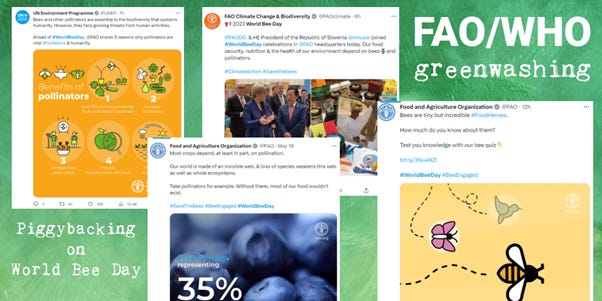
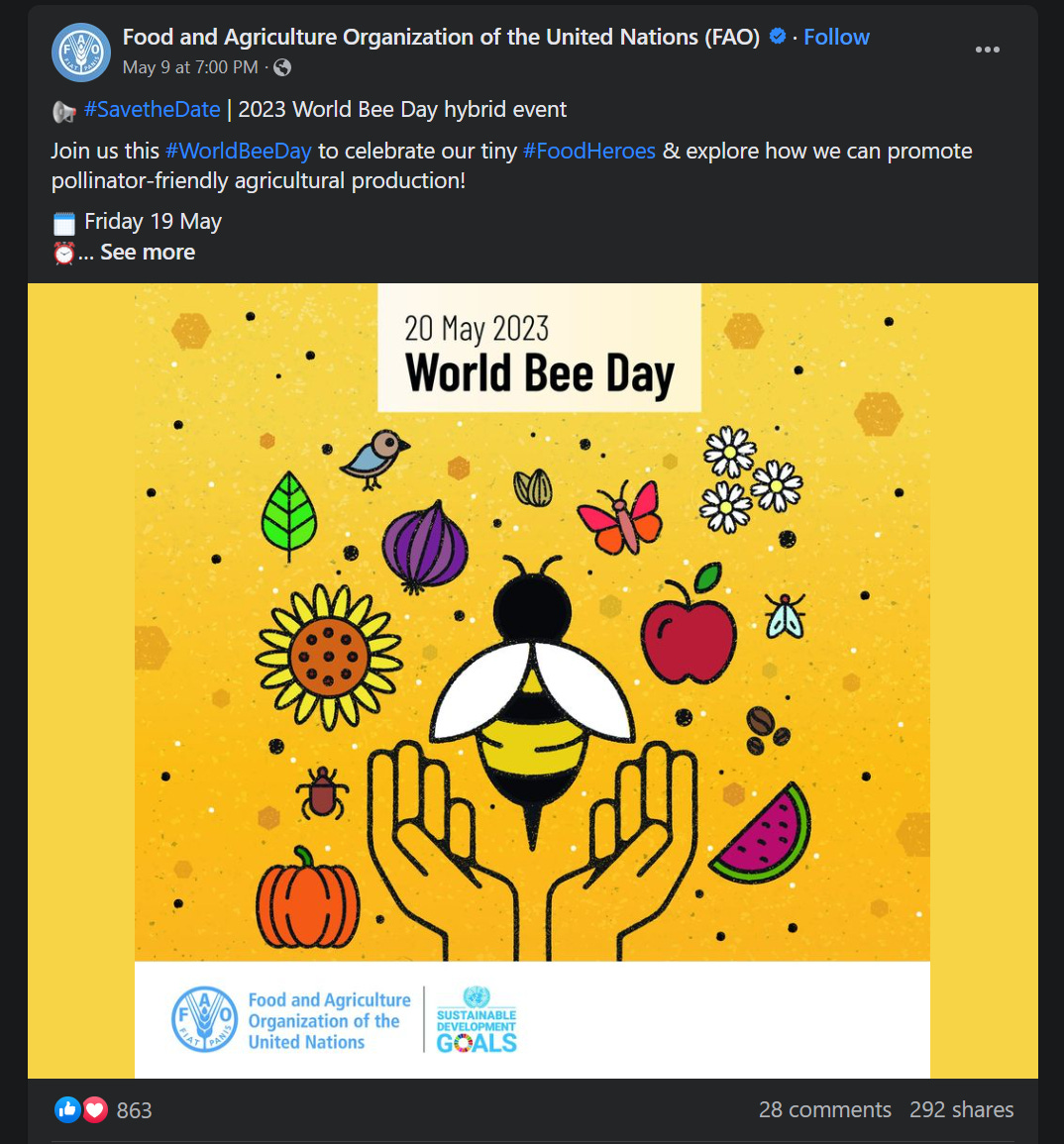
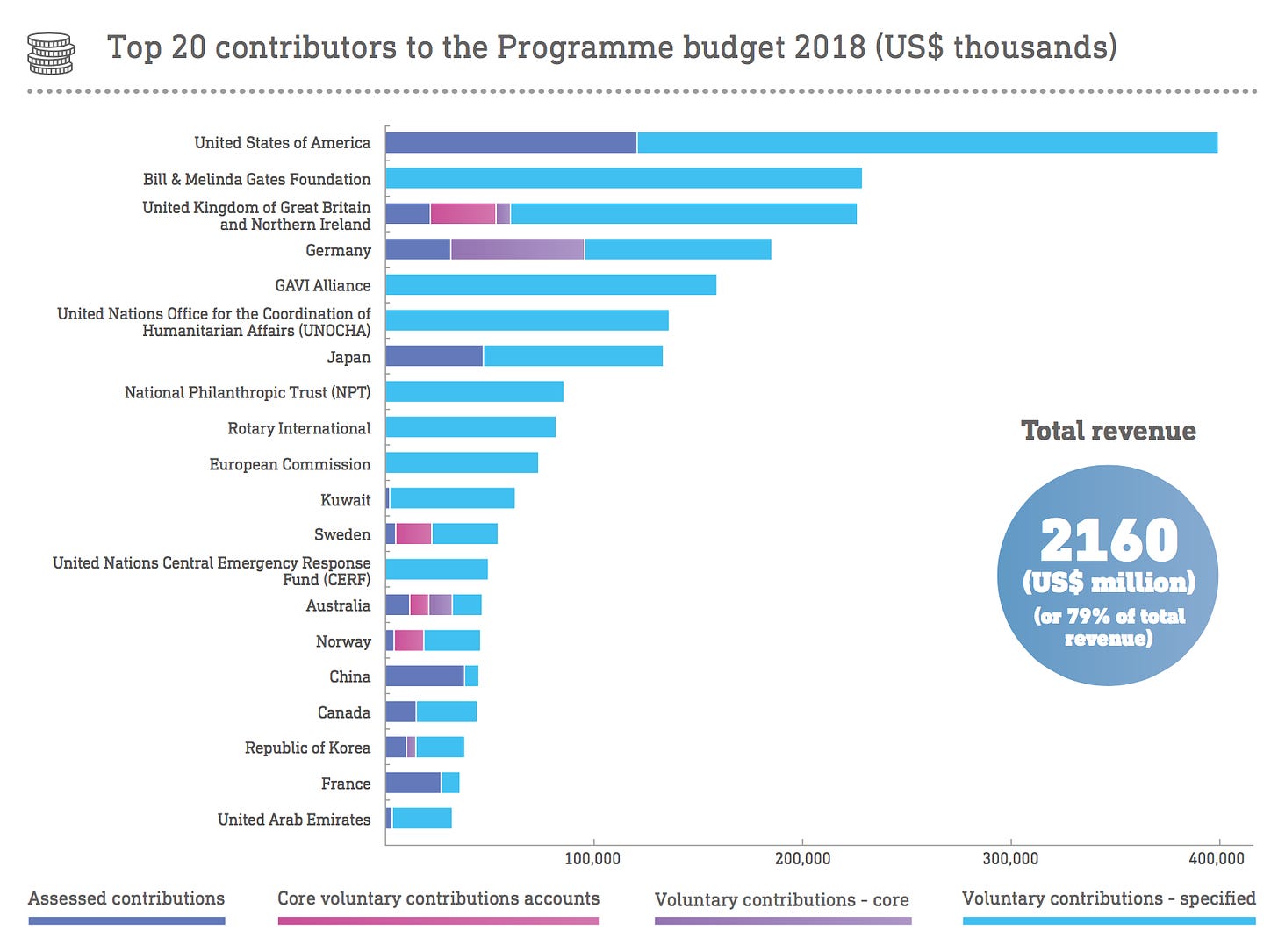
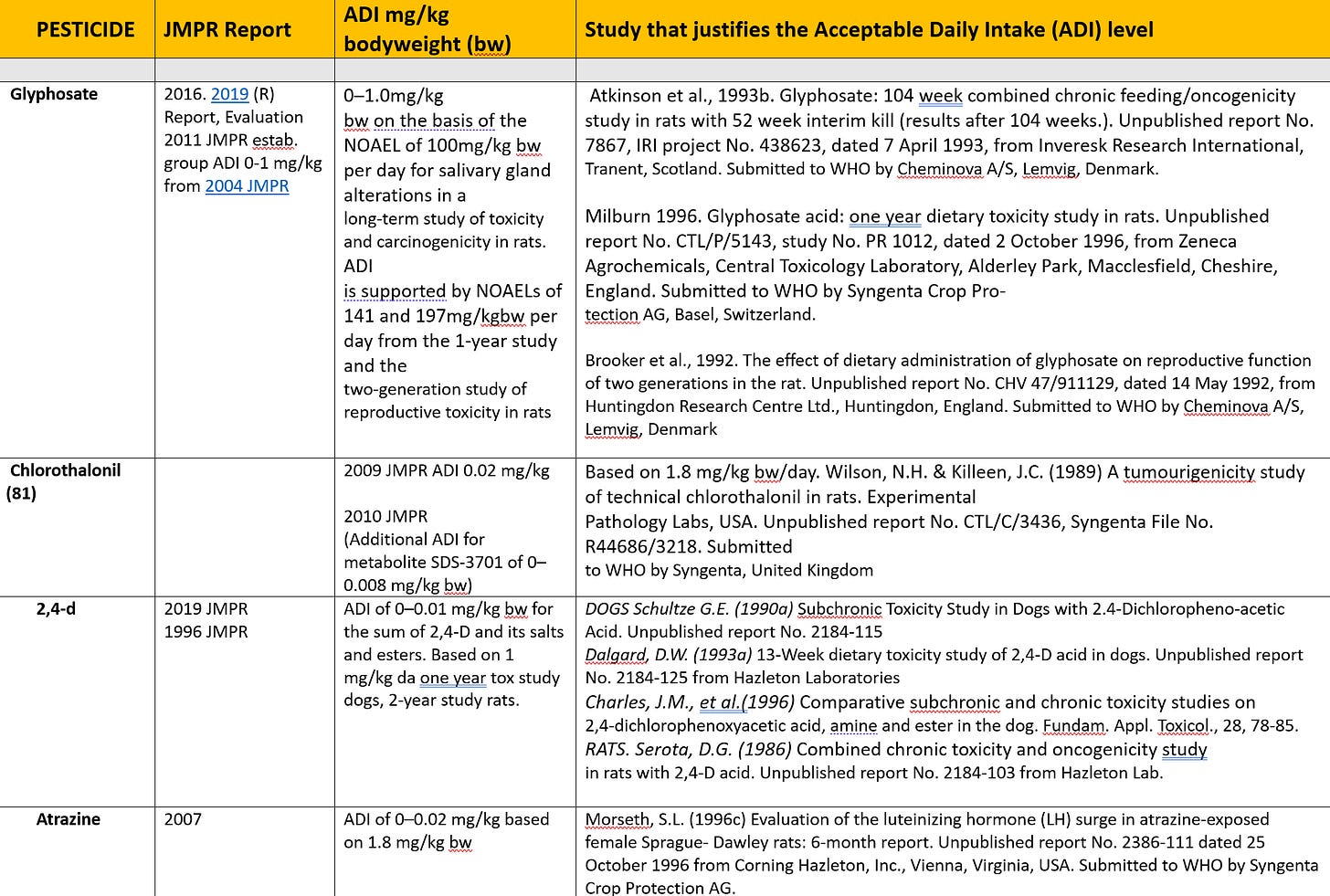

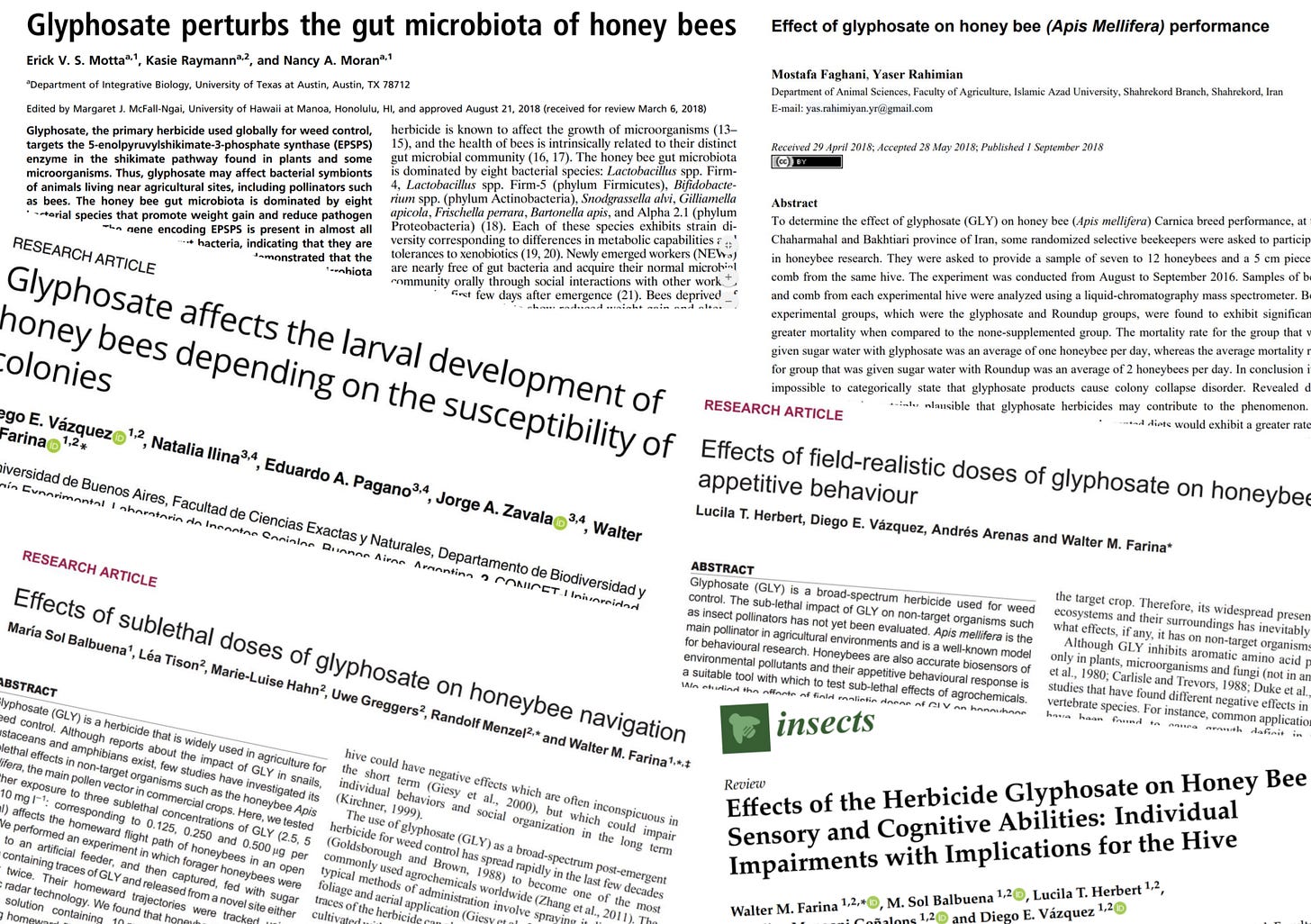
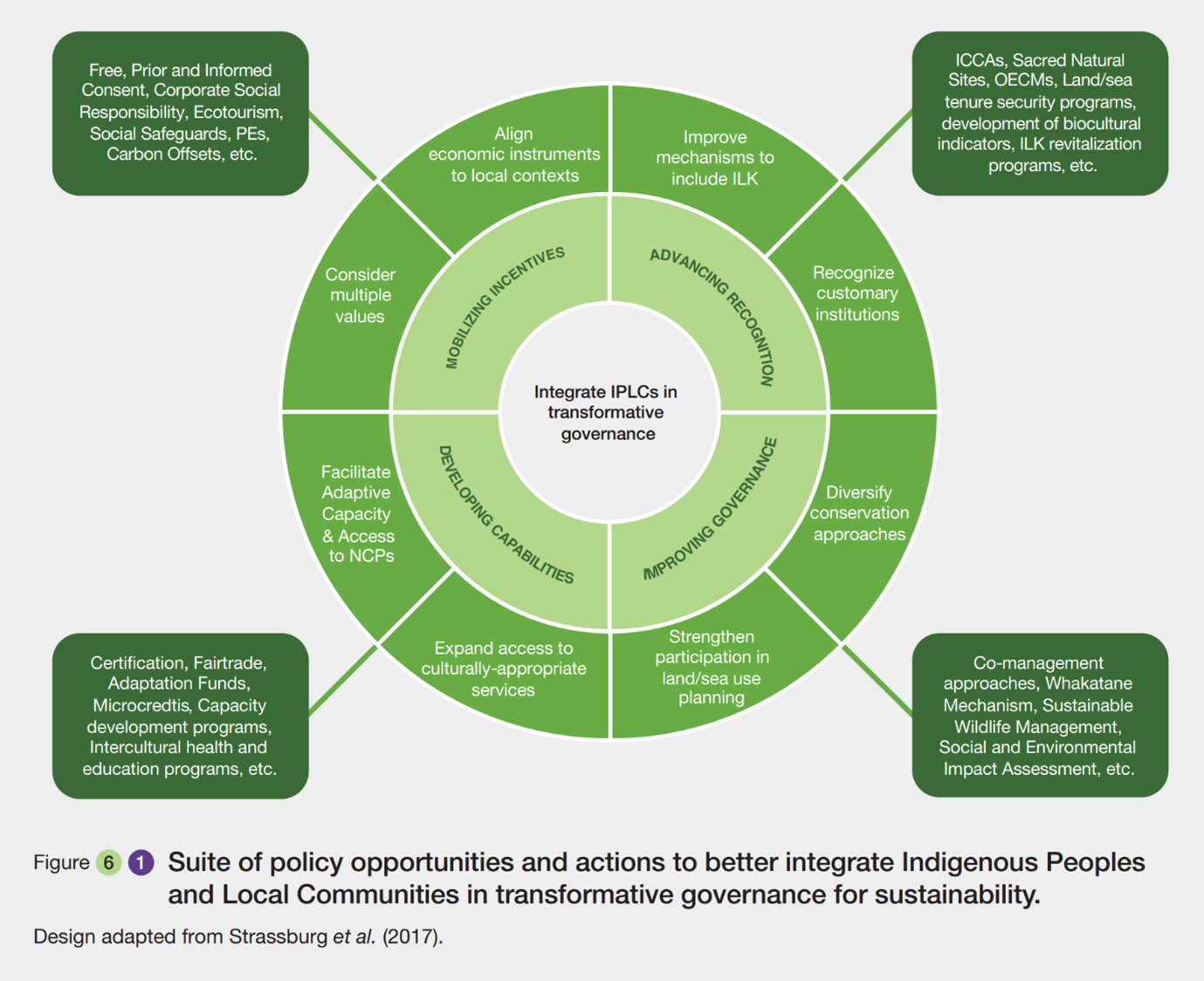

Do you recommend washing fruit & vege with lemon water or is there some other way to physically reduce the chemicals on our food?
I do consider that purchasing organic staples - wheat, rice, oats, popcorn - that are consumed in high quantities in Western diets. These are commonly oversprayed with glyphosate during the drying/desiccation process, or permitted to have high tolerances for other reasons that drive high residue levels. I suspect another issue is the fungicide/fumigant/insecticide applied during logistics, that is not discussed much. I try to source local fruits/vegies spray free as much as possible and in season. But most people have to approach this pragmatically due to time and expense and also due to the erosion of cooking skills over the last couple of generations, which creates barriers to getting into the kitchen to do this important but undervalued work. Reducing ultraprocessed foods is a large way to reduce synthetic chemical exposures. The Codex link shows how high the levels of glyphosate that are permitted, other than the staples I mention above. Of course overspraying doesn't involve just glyphosate but other herbicides eg.diquat. A large variety of herbicides - https://eatsafe.nzfsa.govt.nz/web/public/21- are permitted on wheat crops, including dicamba, 2.4-D, metalaxyl, clothianidin... so mixtures are a large but ignored problem. https://www.fao.org/fao-who-codexalimentarius/codex-texts/dbs/pestres/pesticide-detail/en/?p_id=158